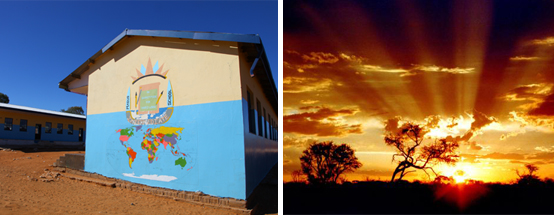
(photo courtesy of Chelsea Gorkiewicz)
Written by Chelsea Gorkiewicz, FabCab Architect
For the first two weeks of April, Chelsea will be in the Moshaweng Valley area of the Kalahari Desert in northwest South Africa. She will be lending her design expertise to the planning and design of a new school and community building called the Skills Development Center.
Chelsea will be part of the Kalahari Experience, which is a service project initiated by Frankfurt International School (FIS). Since 1991 teams of high school students and teachers have been working with the Tswana people in the Moshaweng Valley in South Africa, which is an isolated area in the Kalahari Desert. Most of the 10 villages in the Moshaweng Valley are accessible only by unpaved road. Many of the people in this area are not original residents, but were “displaced” during apartheid. They were sent to this semi-desert area that is now home to approximately 30,000 people. It is one of the poorest areas in South Africa.
The Kalahari Experience brings together teachers and high school students from collaborating schools worldwide to participate in bringing specialized, targeted instruction in English to the underserved community schools in the Moshaweng Valley. At the same time, participating students gain understanding and empathy of cultural diversity, historical and political influences, and challenges faced by residents and students in these communities in South Africa.
Through her husband who teaches at FIS, Chelsea has gotten involved in the development of a new Skills Development Center sponsored by FIS. The new Skills Development Center will be located in Padstow, a small township that has been voted poorest town in South Africa for the last four years. There’s a basic preschool and primary school building in the village, but there is no middle or high school. The community needs a new school and community building to support secondary education, adult learning and job skills development.
Chelsea will be gathering information in the community and at the building site, meeting with community leaders and materials suppliers, and preparing a schematic design for the new Skills Development Center. She hopes to implement sustainable design features throughout the project, including: rainwater collection systems and vegetable gardens, composting toilets, a kinetic playground to help pump well water, and building materials sourced within South Africa that can be assembled using local unskilled labor, bringing much needed jobs to the community.
Check back at the end of April for photos from her trip to South Africa and more information about these projects!
